Electric motorcycle companies have found the American market tough to crack. Limitations with current battery technology have meant that, for a while, electric motorcycles have usually cost significantly more than their gasoline counterparts. One electric motorcycle company has turned a corner and has found a brilliant way to attract more customers. LiveWire, the electric motorcycle spinoff of Harley-Davidson, recently dramatically lowered its prices. Now, these electric bikes are beginning to look seriously appealing.
Harley-Davidson has had a pretty rough ride with its electric motorcycle ambitions. Back in 2019, Harley launched the LiveWire motorcycle. To date, it’s still one of the greatest motorcycles I have ever ridden. However, its starting price of $29,799 was bewildering. That kind of money would buy you some of the greatest flagship motorcycles on the market, so it was just hard to swallow that price for a bike that had a combined range of just 95 miles.
Harley-Davidson has since spun off its motorcycle division as its own company named LiveWire. The original bike is now known as the LiveWire One. Since then, LiveWire has also launched a slew of middleweight electric motorcycles with the new S2 Alpinista sport standard, the S2 Mulholland cruiser, and the S2 Del Mar street tracker. All of these motorcycles look awesome, and it sounds like people love how they ride. What’s also really cool is that since LiveWire is still a sibling of Harley, you can technically say that Harley finally builds bikes for almost every kind of rider! The problem was just that LiveWire has had trouble selling them.
Bike Math

Sadly, the data speaks for itself. Here’s what I wrote last year:
LiveWire sold 597 motorcycles in 2022 and just 660 motorcycles in 2023. The company says it lost $85 million in 2022 with the losses deepening to $125 million in 2023. How rough is it for LiveWire? The company sold exactly zero of its flagship LiveWire One motorcycles in 2023. LiveWire is expected to burn up to $115 million of Harley-Davidson’s money by the end of this year and still end up selling well under 1,000 motorcycles doing it.
According to LiveWire, the motorcycles aren’t even bringing in that much money. In the third quarter, LiveWire sold $3.2 million in children’s balance bikes compared to just $1.2 million made from selling 99 electric motorcycles.
LiveWire ended its 2024 selling only 612 motorcycles. For those of you doing the math, that’s fewer motorcycles than it sold in 2023, and that year’s numbers already weren’t great. Things are looking grim this year. LiveWire sold only 55 motorcycles in the second quarter, a whopping 65 percent decrease from 2024. The first quarter was somehow worse, with LiveWire moving just 33 units. The company burned nearly $40 million in the first two quarters to move just 88 motorcycles.

I’ve explained the problem that many American riders have with electric motorcycles. These motorcycles are awesome and revolutionary, but are simply too expensive for what you get. As it stands, you can buy a $22,000 Zero that’s marketed as an adventure bike, but if you take it on a highway, it will go around 90 or so miles before you have to camp out at a charger for an hour or two. Electric motorcycles get the best range scooting around cities, but even then, with many units often costing above $10,000, it’s hard to get people off of cheaper alternatives like the Honda Grom or an electric bike imported from China.
Sadly, this problem isn’t realistically going to be solved until there’s either a major breakthrough in battery chemistry or the manufacturers dramatically change their pricing in America. This is because batteries make up the bulk of the cost of these motorcycles.
Getting back to LiveWire here, just about any other company without the backing of the fortunes of Harley-Davidson would have closed up shop a long time ago. Something had to change. If trends continued unabated, LiveWire would have likely sold half as many motorcycles this year as it did last year.
Huge Discounts
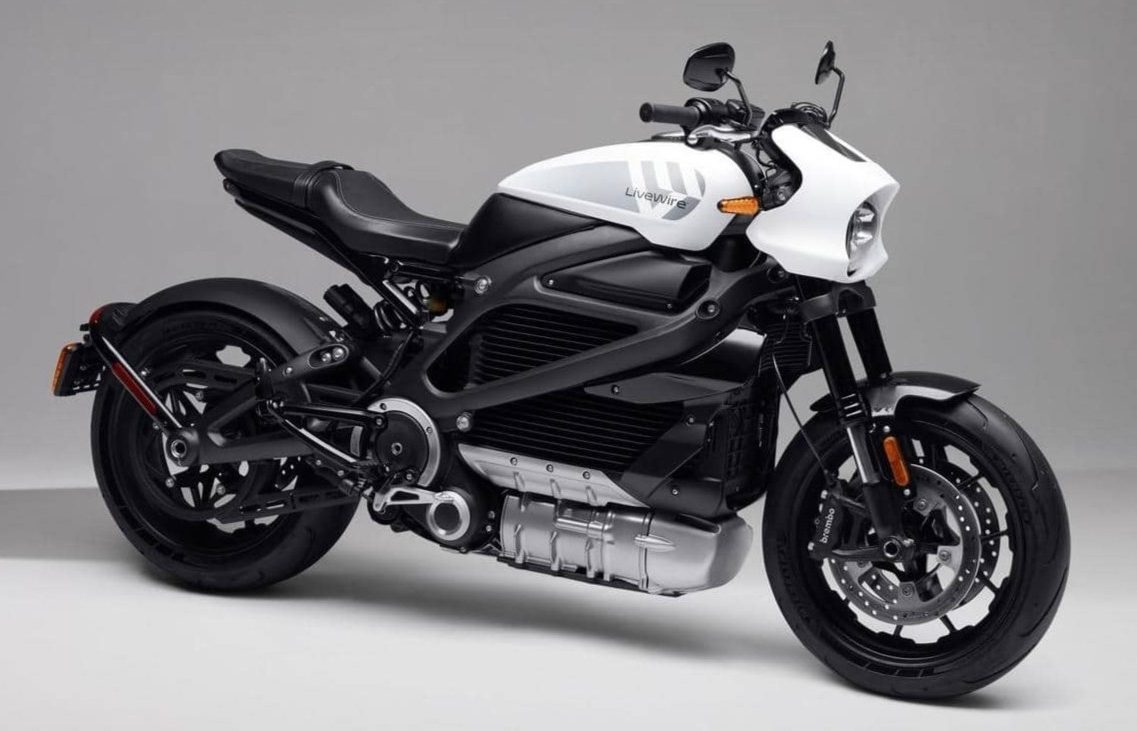
LiveWire has done something pretty cool. In a world where everything has gotten more expensive, LiveWire has dropped its prices, and the drops aren’t small, either.
Let’s take LiveWire’s debut bike, the LiveWire One (above), which used to be called the Harley-Davidson LiveWire. The price of this motorcycle has steadily decreased since 2019, and earlier this year, the price reached $22,799. Its new price? $16,499. That’s almost half off from its original price!
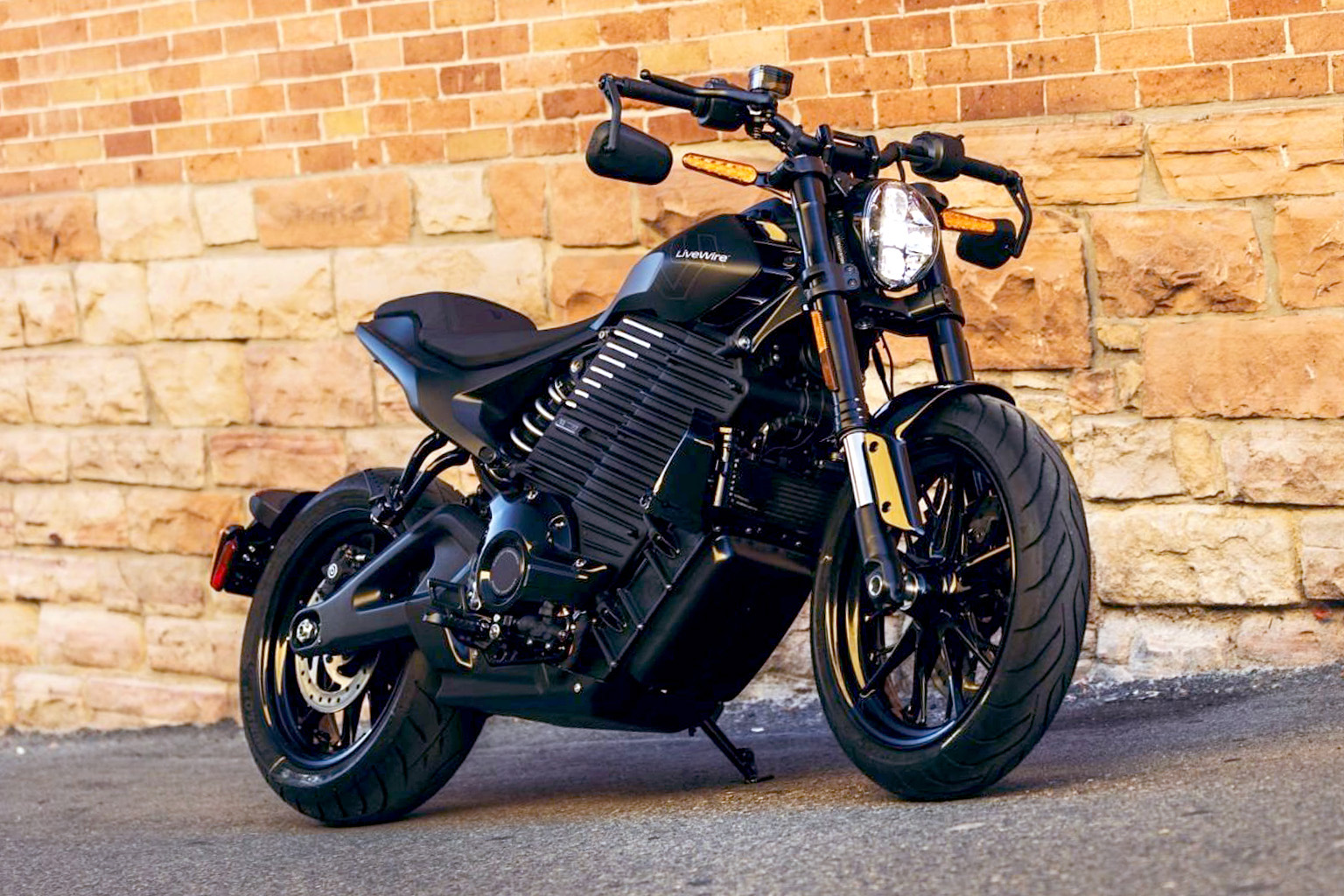
Next is the S2 Alpinista (above). This electric sport standard motorcycle launched in January 2025 and immediately got rave reviews. Its price at launch was $15,999. Now? It’s $11,999.
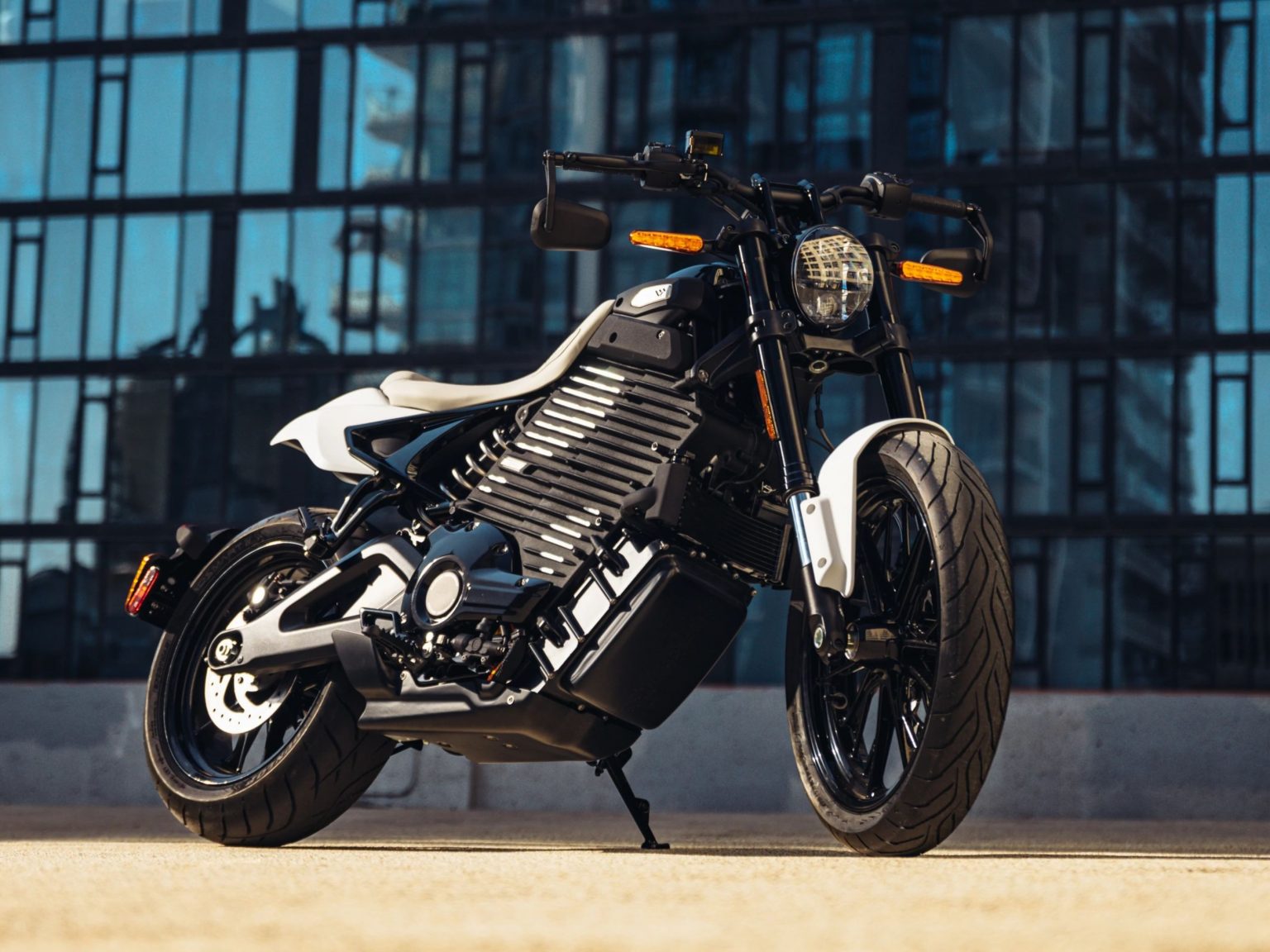
Down from there is the S2 Mulholland (above), LiveWire’s electric performance cruiser that launched in early last year. Its price was $15,999. Now it’s $10,999. That’s a pretty big pile of cash off!
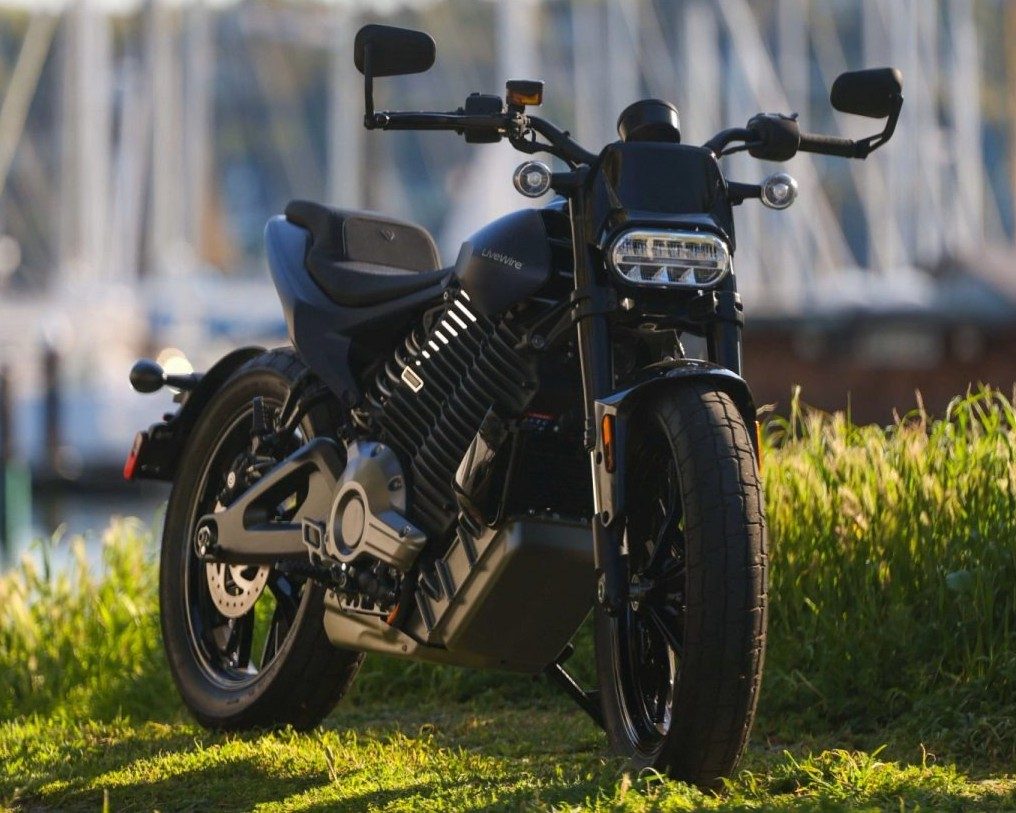
Finally, we arrive at the electric motorcycle that launched LiveWire’s entire S2 platform, the Del Mar street tracker (above), which launched in 2023. That one had a price of $15,499, and now it’s just $9,999.
Honestly, LiveWire will get no complaints from me here. The company more or less slashed its prices by a third here, which is amazing because it seems everyone else is raising prices right now.
As for the motorcycles themselves, they’re all slightly different flavors of the same thing. They’re all based on LiveWire’s scalable Arrow architecture, specifically the S2, which is the middleweight version of the platform. From my previous reporting:
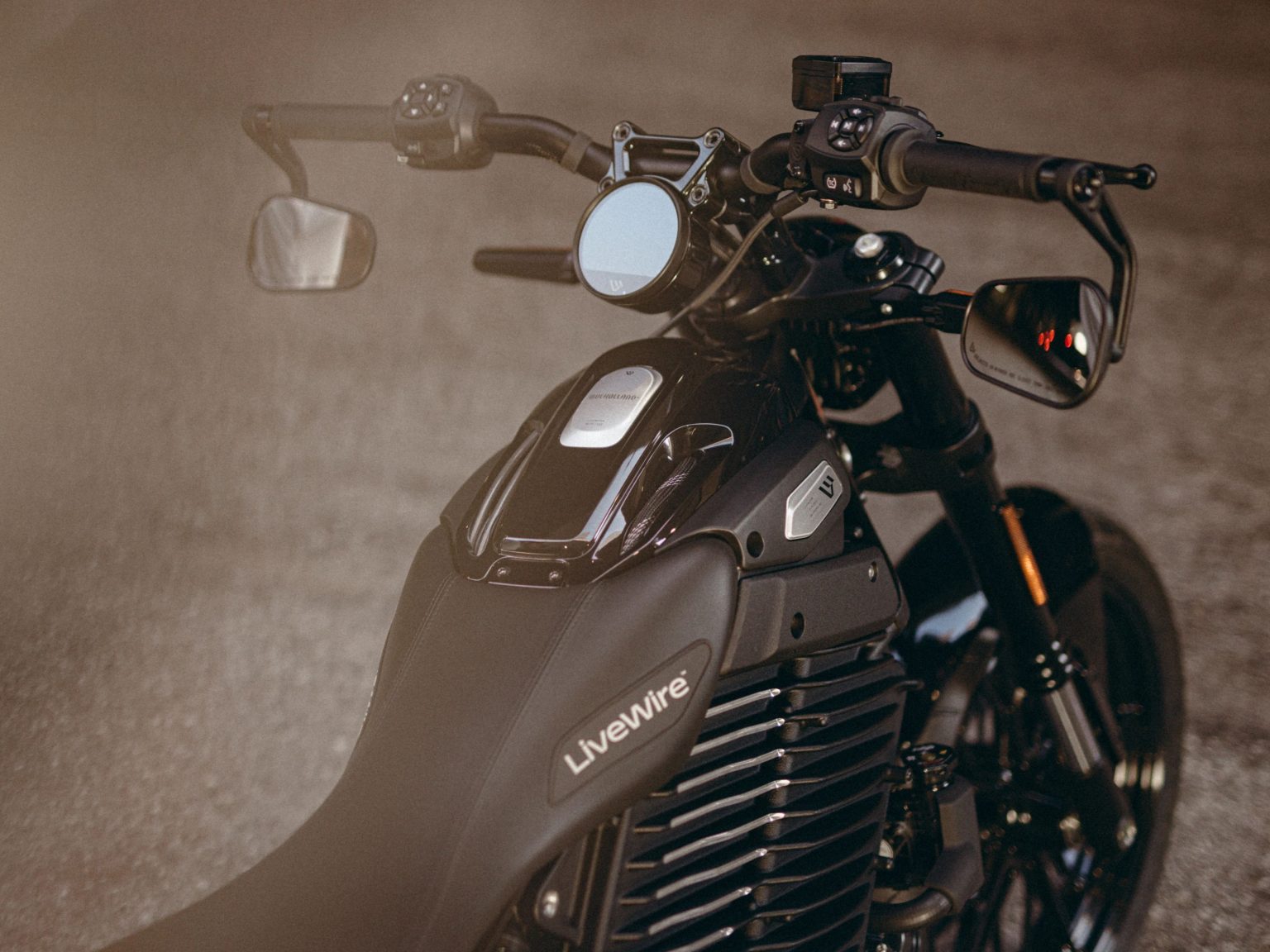
This architecture is the next generation of the platform that underpins the old LiveWire and has upgrades including a battery and motor that are structural elements. Likewise, Harley engineers simplified the platform so that the newer Arrow bikes can be built in 44 percent less time than the old LiveWire. Perhaps even better, Arrow was designed so that it wouldn’t be terribly difficult to make S1 heavyweight motorcycles or S3 lightweight motorcycles all on the same platform.
If you go to LiveWire’s website, you’ll find that all three S2 models will go between 113 miles and 120 miles on a charge in a city from a 10.5 kWh battery, hit 60 mph in around 3 seconds, punch it down the road with 84 HP, and take two hours and 20 minutes to charge fully at the fastest. All of them even weigh roughly around 430 pounds and change. Really, the differences between them are in riding style. The Mulholland is a laid-back cruiser, the Del Mar is the flickable street bike, and the Alpinista is the sporty all-rounder.
Finally Attractive

I have written articles about all of these (links above), but sadly, I have not gotten the chance to ride them yet. I hope to change that one day. Either way, I think with these lower prices, these bikes are finally pretty alluring. A LiveWire electric motorcycle is now within reach for so many more riders, and I adore that.
Personally, if you ball on a budget like I do, I’d get the Del Mar and wheelie away with a smile on your face. As I said, the S2s are all very similar, anyway.
I have no idea if these pricing changes will alter the course of LiveWire’s sales. Honestly, I hope they do. I’ve been hard on LiveWire, but that’s not because I dislike it, quite the opposite. LiveWire is at the cutting edge of Harley-Davidson’s technology and shows that even the ol’ Motor Company still has new tricks up its sleeve. Well, and as someone who was born in Wisconsin, it’s hard not to root for the home team. Maybe these price drops will work. We’ll see!

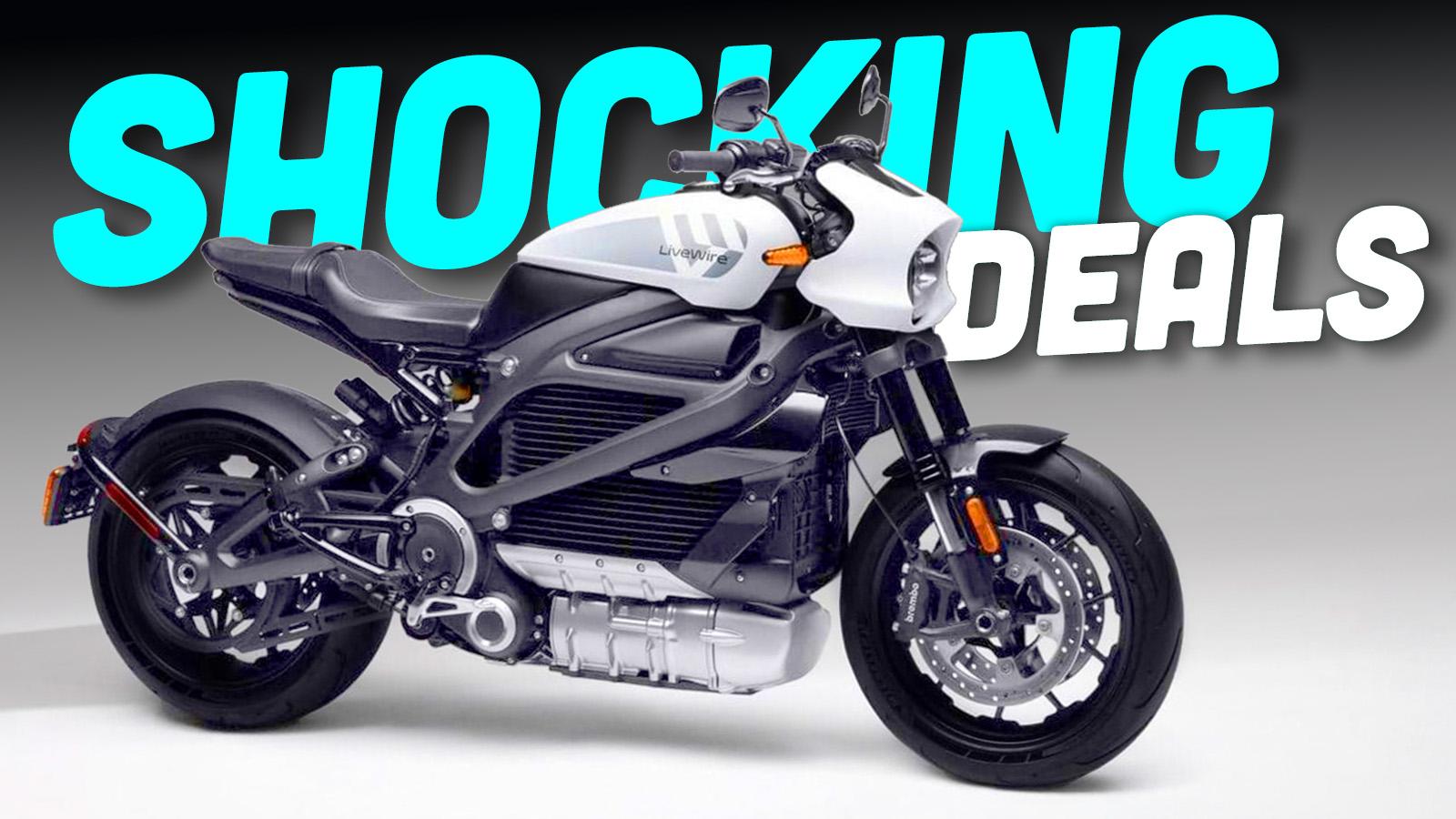







You can buy a LiveWire One electric motorcycle for $16,499, it weighs 562 pounds and has 117 Nm of torque, or a Specialized Turbo electric mountain bike for $19,999, it weighs 52 pounds and has 110 Nm of torque.
Please link sources. My guess is the Livewire is measured at the motor before the gear reduction and the specialized is at the wheel
Sure thing Sport!
https://www.livewire.com/livewire-one-electric-motorcycle#platform – 86 ft lbs (116.6 Nm) claimed
https://www.specialized.com/us/en/s-works-turbo-levo-4-ltd/p/4260592?color=5442214-4260592 111 Nm claimed
Thanks. Looks like that ebike motor is spec’d at the motor, but that large value is the result of being compatible with the gearing needed to be compatible with human legs which can’t spin very fast. In low gear, you might get to 5 mph real quick, but the 0.88 horsepower doesn’t compare to the 100 hp of the Livewire
I think you mean “Del Mar (not it’s real name)”. 😉
At that price they are still too high. I would rather get a ryvid anthem. Electric bikes arent the only thing going down in price. My local Kawasaki Dealership has the Hybrid motorcycles down to 8k asking price
$10k-$17k and people think they should be 3-8x cheaper? LOL, I’m guessing none of these people have bought any new motorcycle in the past 20 years. $1.25k-5.6k gets you an Xmax (which is great), Honda Met, or Triumph Street Twin 400. None of those are bad offerings at all, but that’s not a remotely reasonable price for these (despite their shortcomings).
HD dropped the prices on Buells right before the axe fell so this is likely a harbinger of the next step.
HD was willing to limp Buell along until the Rotax twins took over, and without any real legacy support from the big piggies I don’t see Livewire living much longer.
Yeah I agree. Sounds like a last-ditch fire sale.
When Yamaha exited the e-bike market they started selling for about half off. https://powersportsbusiness.com/top-stories/2024/11/05/yamaha-pulls-out-of-u-s-e-bike-market/
Maybe this means they’ll get even cheaper as winter nears. Everyone know the best deals in a Going Out of Business Sale are the days before they close the doors.
I bought a LiveWire One the 1st year they switched the branding. I love the bike in almost every way. The look and ride are both amazing – so much fun! Range anxiety is very real. The problem is Harley moved to the new platform, and every bike since then has even lower range. I had a reservation for a First Edition Del Mar, but when it came my turn to purchase I bailed. The final specs were terrible. Except for CA, the EV infrastructure sucks. When range anxiety already exists, you can’t arrive at a rare EV station and find out nothing works. The software is down, the charging cable is ripped out, or the only working one is plugged in to another vehicle and there’s another car waiting. The EV station at the Harley dealer where I bought mine, hasn’t had their charger working since it was installed (5 years ago). The current administration isn’t supporting EVs which also hurts the market. Hopefully Ducati has luck with their lithium ceramic solid state batteries.
Along with other shortcomings, one problem for me is how quiet electric bikes are. Motorcyclists are hard enough to notice as is.
I found running highbeams on and a louder than stock exhaust have definitely kept cars out of my motorcycle’s path. Highbeams reduce car left turn incidents and louder exhaust keeps cars from merging into me on expressways. I have decades of riding experience to draw from.
Thanks for blinding all incoming traffic because you do not know how to avoid collisions
The barrier to EV adoption is cost.
Everyone talks about electric vehicles in terms of range, range, range.
But this isn’t titled “Harley-Davidson’s Electric Motorcycle Spinoff Raised Its Ranges So High That Its Bikes Are Seriously Enticing“, is it?
The $30k LiveWire’s range failed to justify a high price. But as an otherwise “great” motorcycle, it sounds like it could’ve been seriously considered at a lower price.
Up to a certain point, range is a practical constraint, depending on one’s circumstances. But once an EV has enough range to be useful, the important thing is price.
People are willing to pay more for something with longer range.
But they aren’t more willing to pay for something because of longer range.
Wow, those are massive discounts. I’m wondering if this is a corporate hail mary to save the brand…
Trying to get as much for their inventory as possible before closing up shop. At which point they would be worth even less. Not that even quadrupling the number they sell would result in a viable business.
Due to poor aerodynamics, the range of BEVs drops significantly above 40-50 mph, making them ineffective for covering long distances. For shorter trips, ebikes or small ICE options are a tiny fraction of the price.
They were overpriced by a factor of 5-10 and now are overpriced by a factor of 3-8. Still a terrible, terrible deal. Until batteries make a huge leap forward, there isn’t much point to BEV motorcycles.
I was just looking at those boss looking “engine” fins (actually battery I imagine) on the S2s, and thinking, that is not doing highway range any favors.
Typically, the large sail made of meat is the primary issue.
Or … make an electric Akira motorcycle? Someone? Pretty please?
Funny, I just posted a comment on the recent scooter article that referenced the Akira motorcycle. Lowering an old Yamaha Morphus and a little modification gets as close to the Akira vibe as I have seen.
There’s also the Gurney Alligator school of thought on that. Though I think the packaging flexibility and possible use of hub motors would make a 2WD Akira bike possible.
Seriously, who wants to ride a performance bike less than 100 miles? 50 miles, turn around and hope like hell you make it back home by feathering the throttle. Cut the price to 1/3 and …maybe. Death rattle by a dying company.
I can get a pretty good ride in 100 miles, but the good part starts right outside my door. If you have to get to the good roads first it is a different story.
$10k is close to enticing if I were still rabid for bikes…but I think I would rather get a used Stark Vaarg and rip dirt roads.
Look up the riding habits of the typical North American motorcyclists, and you’ll see it’s most of them.
Based on what? Urban riders? My observations are entirely different.
https://www.revzilla.com/common-tread/how-many-miles-do-you-ride-a-year
You really think that with such low annual mileage rates, most people are averaging 100+ mile rides? Not me. Most people probably take them to work every once in a while, or to the bar the next town over, or maybe to get some ice cream. I find it really unlikely that the majority of riders would have their typical ride be more than 100 miles.
While none of this directly points at 100+ mile rides, I can’t find any other form of mileage data that would even suggest otherwise.
Yeah, I am really surprised most people that invest in a motorcycle ride that little. It must help that I have hundreds of miles of paved roller coaster mountain roads right outside my door in southwest Oregon. I guess I am a world apart from the average motorcycle rider. Lucky me.
They are heading in the right direction with pricing. Its going to be largely up to the dealers though. If they can get it a touch lower mainly because they don’t want to deal with them I could see someone cross shopping an electric China bike especially a grey area one think a few k is worth getting the livewire. At double it might be a hard sell. My experience with hd dealers is up there with the worst so I don’t hold much hope but them not wanting to hold stock or anything to do with the electric stuff in the first place makes me think they will be better behaved on these.
Still think HD has a marketing problem. LiveWire is a clever enough name, but doesn’t exactly scream Harley adjacent. Now, BarbWire or HayWire, maybe HardWire, those speak to the road rebel dentists out there.
They do and they’re making the same mistake they did with Buell and selling them through their existing dealer network. If they would lease all new spaces for LiveWire standalone dealerships they might be able to shake some of the image.
I also think electric bikes are a hard sell for a variety of reasons but that’s another debate.
You don’t think that as dentists put on their leather daddy pirate cosplay they could be rocking to Motley Crue’s Live Wire?
I’m was thinking Steppenwolf, but sure, Mötley Crüe works, in which case, I guess LiveWire would resonate in their dental cavities.
Great pricing, finally. I would be afraid they’re doing this just to sell off what they’ve got and then quit production. I hope I’m wrong.
Oof, at that price a Del Mar is really tempting. If I wasn’t in the middle of buying a house I’d have a hard time staying away from the dealership.
You’re welcome to the tip about their new prices.
I love all these bikes and at these prices they are much more tempting. That range is still a big issue. I wish they would offer a slightly larger battery. $10k for the DelMar as it is now, but the long range edition is $12k and gets maybe another 50 miles. The bikes are so narrow, that you’d think they could shove some more batteries on the bike without changing the cool look too much.
I really fear that H-D is going to pull the plug on these bikes if sales don’t improve, and that would be a damn shame. Especially since Honda announced their electric bikes and they are more expensive, have less power and less range.
Finally at these prices they make sense as long as you’re using it fairly locally. How’s the charging speed?
I’m curious how much it costs to build one of these bikes. My understanding is that H-D wasn’t making a lot of money on the original Livewire when it sold for $30k. I have a hard time believing they have cut costs to the point a Livewire One can be profitable at $16,500. I’m very skeptical the S2 bikes are profitable at their new price points as well, even if they have smaller and cheaper batteries.
While these are very fun bikes, I am having a hard time seeing a business case for Livewire’s continued existence.
The article states LW is going to lose like $100M this year on sales of far less than 1000 bikes. While there are far more costs involved like building factories and fixed costs, but they are taking a BATH on each one sold. None of them are coming close to making a profit. Losing many tens of thousands on each bike.
I don’t see battery prices coming down fast enough to keep LW afloat for long. I’m seeing (probably hyped up) headlines that battery prices will be down 90% from just a few years ago, but I think it’s simply too little too late. I hate to say it, but I give LW 1 more year to turn things around.
I agree battery prices aren’t going to drop fast enough to save Livewire. Even if prices do somehow drop considerably, there is still the range and charging time problem, though.
The other thing that occurs to me is that Harley-Davidson isn’t exactly doing well at the moment. I could see H-D subsidizing Livewire for a long time if ICE bikes were selling well. It seems problematic to lose $100 million on Livewire when the parent company (which owns 90% of Livewire) is also struggling.
I am also not sure EV motorcycles are the future. In the US at least, motorcycles are toys more than transportation devices. When toy shopping preference matters more than practicality. If people prefer ICE bikes to EV bikes there is very little reason to make the switch. Also, motorcycles (again, at least in the US) are a very small fraction of emissions; I’m not sure there is any significant climate or environmental benefit from getting riders to switch to EVs.
Again, I am really struggling to see any business case for Livewire.
On your first point about H-D being weak, I totally agree.
On the 2nd point about EV bikes, I only partially agree.
I have watched a LOT of reviews on these bikes and everyone seems to LOVE the way they ride. That immediate torque off the line. And as a huge fan of ebikes I can totally see where they are coming from. One of mine is more of a cruiser ebike and there’s just something about that electric motor kick. I’ve used to own a H-D ages ago and I’m still a fan, but EV motorcycles could easily be their own market segment if only range goes up.
And I mentioned this to someone else, the LW bikes are known to be rather svelte – not exactly light, but still svelte. Physically speaking I could see them adding more batteries to give it that extra range if only prices were low enough. There’s also the push for higher power density. If power density went up 20%, then you just gave riders 20 more miles of range without changing the dimensions of the bike at all. And of course the holy grail, which is solidstate batteries which Ducati showed off in a concept bike like a week ago. So all these things are converging to give electric motorcycles a future, I just don’t think LW will be around long enough to see that future.
Damn shame.
I owned one of the original H-D Livewires for 5 years – I traded it in last July mostly because the riding position didn’t agree with my back. They are great bikes with some real advantages over ICE bikes. They are ridiculously fast. You are never in the wrong gear or out of the peak of the power band. The lack of vibrations and heat is nice. The lack of noise also means you don’t attract police attention.
However, I do feel the Livewire was less engaging than an ICE bike. There is something enjoyable about mastering an imperfect machine. It takes skill to get maximum performance out of an ICE bike and there can be a substantial learning curve. With a Livewire, the machine does everything for you. Whether you are a skilled rider or a newbie, you can ride a Livewire fast. To me, a Livewire (and presumably other well-designed EV motorcycles) is like a cheat code in a video game. It is nice to skip to the final boss, but you are missing a lot of fun along the way.
Plus, a lot of those reviewers only rode these bikes briefly. While I still enjoyed riding mine after a few thousand miles, some of the novelty (and appeal) of the “cheat code” electric powertrain did wear off. Toward the end I often found myself reaching for the keys to one of my ICE bikes instead of the Livewire. Some of that was the riding position, but a lot was that I enjoyed the experience of an ICE bike.
I think EV and ICE bikes offer a different enough experience that some people will genuinely prefer one or the other. Given practicality is less of a consideration (at least if prices ever become equal), I don’t see why electric motorcycles would completely replace ICE bikes. I agree there is at least some room in the market for EV motorcycles, though.
I think electric bikes are really spot-on great for dirt bikes and stunt bikes. Highway bikes is the wrong application for BEV bikes. There is a reason why Sur-Ron type bikes are selling well but not Livewire.
I’ve got a 4-stroke, 2-stroke, and electric dirt bike. I agree, I prefer the torque profile of the electric in the dirt – no stalling and torque increases as you slow down on that gnarly, sandy hill climb so you always make it to the top.
I don’t have a preference for street motorcycles, but for a car I’d choose the 2-stroke torque profile – big power hit that rewards (requires) working the gear box. Unless you have 700ft-lbs, I find a flat torque profile dull. (More fun to drive a slow car fast than a fast car slow…)
Del Mar under $10k is a good deal on a ‘lectrobike with a built-in L2 charger and a decent-sized battery. Got to test-ride one at the HD Museum and it was a hoot of a wheelie-monster.
Very tempting purchase but my bikes:butts ratio is much too high right now.
It’s a product looking for a market that doesn’t exist. If I could straight trade my 18 year old Honda for a brand new electric motorcycle, I wouldn’t.
Hey man, don’t yuck my yum. Also, if that market doesn’t exist, Zero’s been selling to it for as long as your Honda’s been around.